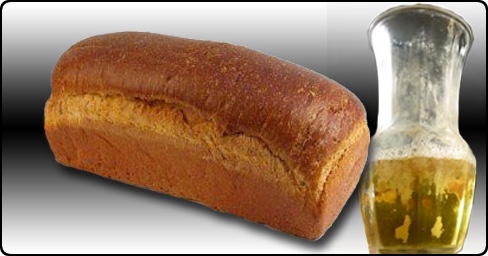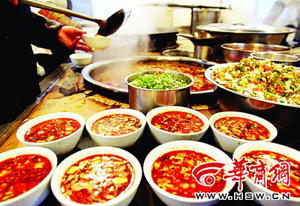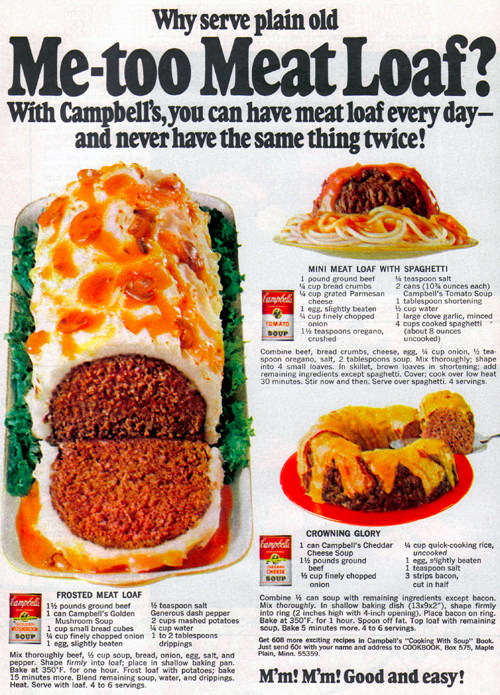Food
Follies of the Mad Men #178
My questions:
1) Did girls and women acquire those same Charles Atlas muscleman biceps shown on the box, or just boys and men?
2) Do they eat Pep on the International Space Station today?
3) Does anyone today still say, "He's got pep!" or "I feel peppy!"...?
And if you haven't had enough cereal trivia, please allow me to highly commend this new book, which is a lot of fun. My review will appear soon at THE BARNES & NOBLE REVIEW.
Posted By: Paul - Wed Mar 07, 2012 -
Comments (6)
Category: Business, Advertising, Products, Family, Food, Nutrition, Health, 1950s
Follies of the Mad Men #177
I'm confused: is this cereal for Beatles imitators or computer programmers?
Posted By: Paul - Thu Mar 01, 2012 -
Comments (8)
Category: Anthropomorphism, Business, Advertising, Products, Food, Cartoons, 1960s
Urine Bread

During the Second World War, prisoners held by the Japanese in an internment camp in Dutch Indonesia subsisted primarily on dry bread they made themselves in a camp bakery. But when their captors stopped supplying them with yeast, it became impossible to keep making the bread — until some of the inmates who were trained chemists figured out it was possible to use urine as a yeast substitute.
In the video above, Pieter Wiederhold, who was held in the camp as a boy with his father, discusses this urine bread. He gives a longer account of it in his book, The Soul Conquers:
The absence of bread was most disappointing. Some creating chemists in our camp got together to think about an alternative way to make yeast. After much discussion and some experimentation, they came up with a solution. They would make yeast using urine. When I heard about it I was surprised but not particularly disturbed. After all, I had eaten frogs and lizards that had been cooked in our soup and I had drunk filthy water from a toilet on the train. Why would it kill me if I ate bread that was made with yeast derived from urine? When he heard about it Father smiled. "As long as I have something to eat to stay alive," he said.
In order to provide the entire camp with bread, a large volume of urine was needed every day. A number of large drums were placed in several locations around the camp and each carried a sign:
"Do your Duty. Think of the yeast factory.
By 8:00 AM we must have at least two
full drums or there will be
no bread tomorrow."
Some internees were given the job of collecting the filled urine drums and replacing them with empty ones. They made the rounds using a two-wheeled cart with handlebars like the one I had used for my moving tasks in the women's camp. The drums were taken to the bread kitchen where they were put on large wood-burning firest to cook. Nitrogen had to be kept inside the urine, which was then transformed to ureum, which in turn converts to ammonia carbonate. The nitrogen was then removed. The resulting residue could be used as a substitute for yeast. The project was directed by someone who we called the "chief urinist."
The first time I received my allocated piece of this bread I was pleasantly surprised. It did not look much different from the way it was before, and bringing it to my nose I did not detect any unusual smell. It tasted OK, although we were so hungry that almost everything seemed palatable. The uniqueness soon wore off and no one gave it any further thought. The bread was baked in this manner throughout the rest of our internment in Cimahi.
In Life of Pee: The Story of How Urine Got Everywhere, author Sally Magnusson explains the chemistry:
Posted By: Alex - Wed Feb 29, 2012 -
Comments (7)
Category: Food, War, Body Fluids
Call Any Vegetable
I just relistened to Frank Zappa's 1971 album, Live at the Fillmore East, or, Freaks & Motherfu*#@%! for the first time in about 40 years, and marveled again at the visionary talents of this supreme musical weirdo. Of course, Zappa died too young at age 52, and we were deprived of many potential years of his music.
I thought this vegetable song might somewhat counterbalance all the bacon and meat talk on WU.
Posted By: Paul - Fri Feb 17, 2012 -
Comments (8)
Category: Anthropomorphism, Food, Vegetables, Humor, Surrealism, Bohemians, Beatniks, Hippies and Slackers, 1970s
Follies of the Mad Men #175
For one fraction of a second after he sniffs it, I was sure the human was going to chow down on this bowl of dog food. After all, if the dog can talk, why not?
Posted By: Paul - Wed Feb 15, 2012 -
Comments (13)
Category: Business, Advertising, Products, Food, Dogs, 1970s
Fijian Cannibal Forks
If you're ever at a dinner party where the host has a set of forks that look like these, you might want to consider leaving, quickly.
These are Fijian "cannibal forks" used for eating human flesh. The iron dance blog offers this description of them:
Fijian cannibal forks are still made, to sell to tourists. What the tourists use them for... I guess that's their own business.
Posted By: Alex - Wed Feb 15, 2012 -
Comments (6)
Category: Cannibalism, Food, Rituals and Superstitions
Saliva Noodles
"Xian shui mian" is a spicy pork and vegetable soup that's a delicacy in the Chinese counties of Meixian, Wugong and Qianxian, traditionally served at weddings, funerals, festivals and birthday feasts. But it's the special ingredient in the soup that gives it the English name "Saliva Noodle". According to a 2010 story on cri.cn: "the noodle soup is reused many times and contains each diner's saliva."I can't tell from the article exactly how the saliva noodle soup is made. That is, are people given a bowl of the soup, and whatever they don't finish is thrown back into the pot -- making it Backwash Soup? Or are people actually spitting and drooling in the soup?

Posted By: Alex - Tue Feb 14, 2012 -
Comments (10)
Category: Food
Girl Wallet and Hot Dog & Bun
You should check out the other cartoons of "hippokiller21" too.
Posted By: Paul - Sat Feb 11, 2012 -
Comments (4)
Category: Food, Sexuality, Cartoons
Bacon Triglyph
Brandon Shimoda was into bacon before it had become the all-pervasive pop-culture meme that it is today. In fact, he might be the guy who started the meme. Back in 2002 and 2003 he hosted the "Bacon Show" -- an art show devoted to bacon. He ran it out of his Albany apartment, greeting visitors dressed in a pink pig costume. The crowning glory of the show was his "Bacon Triglyph" -- three pieces of bacon encased in polyester resin, preserving them for all eternity.

Posted By: Alex - Fri Feb 03, 2012 -
Comments (4)
Category: Art, Food, Bacon
Meat Loaf Every Day!
If you had to eat the same thing every day, why not make it meat loaf? Sounds good to me.
Ad from Good Housekeeping, August 1969. (via JB's Warehouse and Curio Emporium)
Posted By: Alex - Mon Jan 30, 2012 -
Comments (5)
Category: Food, Advertising, 1960s

| Who We Are |
|---|
| Alex Boese Alex is the creator and curator of the Museum of Hoaxes. He's also the author of various weird, non-fiction, science-themed books such as Elephants on Acid and Psychedelic Apes. Paul Di Filippo Paul has been paid to put weird ideas into fictional form for over thirty years, in his career as a noted science fiction writer. He has recently begun blogging on many curious topics with three fellow writers at The Inferior 4+1. Contact Us |




